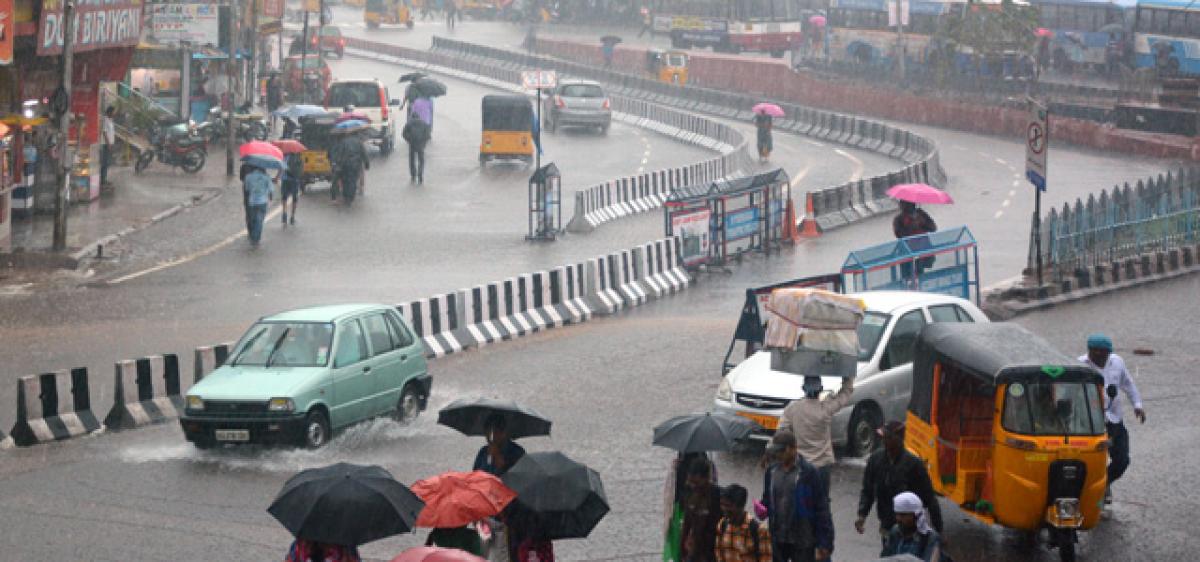Live
- The Best Way to Explore the Imperial City
- Odisha holds successful mega investors roadshow in Singapore
- PGTI Tour: Top stars to fight for honours in Servo Masters Golf
- SC upholds termination of LIC employee for absenting himself without intimation
- ‘Stone me or shoot me, won’t spare anyone,’ says Anil Deshmukh after discharge
- Siddaramaiah, Shivakumar turning Karnataka into Pakistan: K’taka BJP
- Zimbabwe records 70 suspected cholera cases, one death amid new outbreak
- Babri demolition day: No Assembly proceedings in Bengal on Dec 6
- Typhoon Man-yi suspends ferries, submerges streets in China
- 2400 youths get jobs with big firms under NSDC scheme
Just In

India looks likely to receive higher monsoon rainfall than previously forecast as concern over the El Nino weather condition has eased, the chief of the weather office said on Tuesday, raising prospects of higher farm and economic growth.
New Delhi : India looks likely to receive higher monsoon rainfall than previously forecast as concern over the El Nino weather condition has eased, the chief of the weather office said on Tuesday, raising prospects of higher farm and economic growth.
The state-run India Meteorological Department on April 18 forecast this year's monsoon rains at 96 per cent of the 50-year average of 89 cm. "Things have changed for the good since then," K J Ramesh, director general of the state-run India Meteorological Department, told Reuters in an interview.
The monsoon delivers about 70 per cent of India's annual rainfall, critical for crops such as rice, cane, corn, cotton and soybeans because nearly half of the country's farmland lacks irrigation. "We assessed 96 per cent based on the climatological conditions up to March. Now, conditions are becoming favourable for an improvement over our April 18 estimate," Ramesh said.
Australia's Bureau of Meteorology recently said there were signs of concerns easing over El Nino. El Nino, a warming of ocean surface temperatures in the eastern and central Pacific that typically occurs every few years and was linked to crop damage, fires and flash floods, faded in 2016.
The establishment phase of the monsoon north of the equator has already started, and the Indian Ocean Dipole phenomenon - which counters the impact of an El Nino - will have an incremental positive effect on the Indian monsoon, Ramesh said.
Pre-monsoon showers have already hit certain dry areas in the southern part of the country, he said, bringing much needed relief to farmers ahead of the start of the four-month monsoon season beginning June. India defines average, or normal, rainfall as between 96 percent and 104 percent of the 50-year average.
Jettisoning a statistical method introduced under British colonial rule in the 1920s, the India Meteorology Department has for the first time relied on the so-called dynamic model to improve the accuracy of one of the world's most vital weather forecasts. The new system, based on a U.S. model tweaked for India, requires large computing power to generate three-dimensional models to help predict how the monsoon is likely to develop.
Experts say better forecasting could help India raise its farm output by nearly 15 per cent, by helping farmers tweak the best time to sow, irrigate or apply fertiliser, and, if rains fail, plan state-wide measures. This would be a major boon for a country already either the world's biggest or second-biggest producer and consumer of rice, wheat, sugar and cotton.
Higher farm output will raise the income of some 600 million people who depend on farming for their livelihood, and boost demand for an array of goods and services.

© 2024 Hyderabad Media House Limited/The Hans India. All rights reserved. Powered by hocalwire.com







